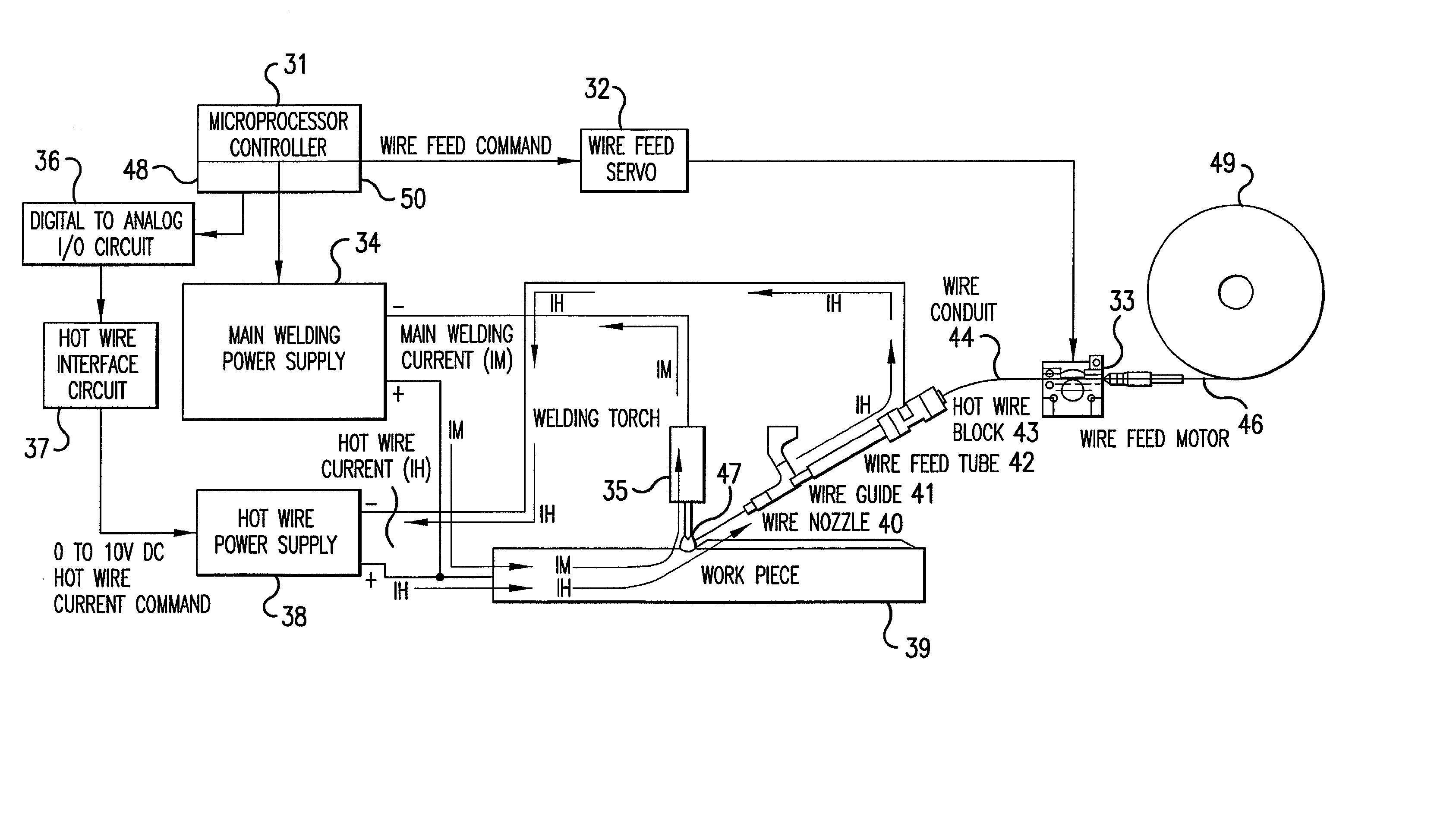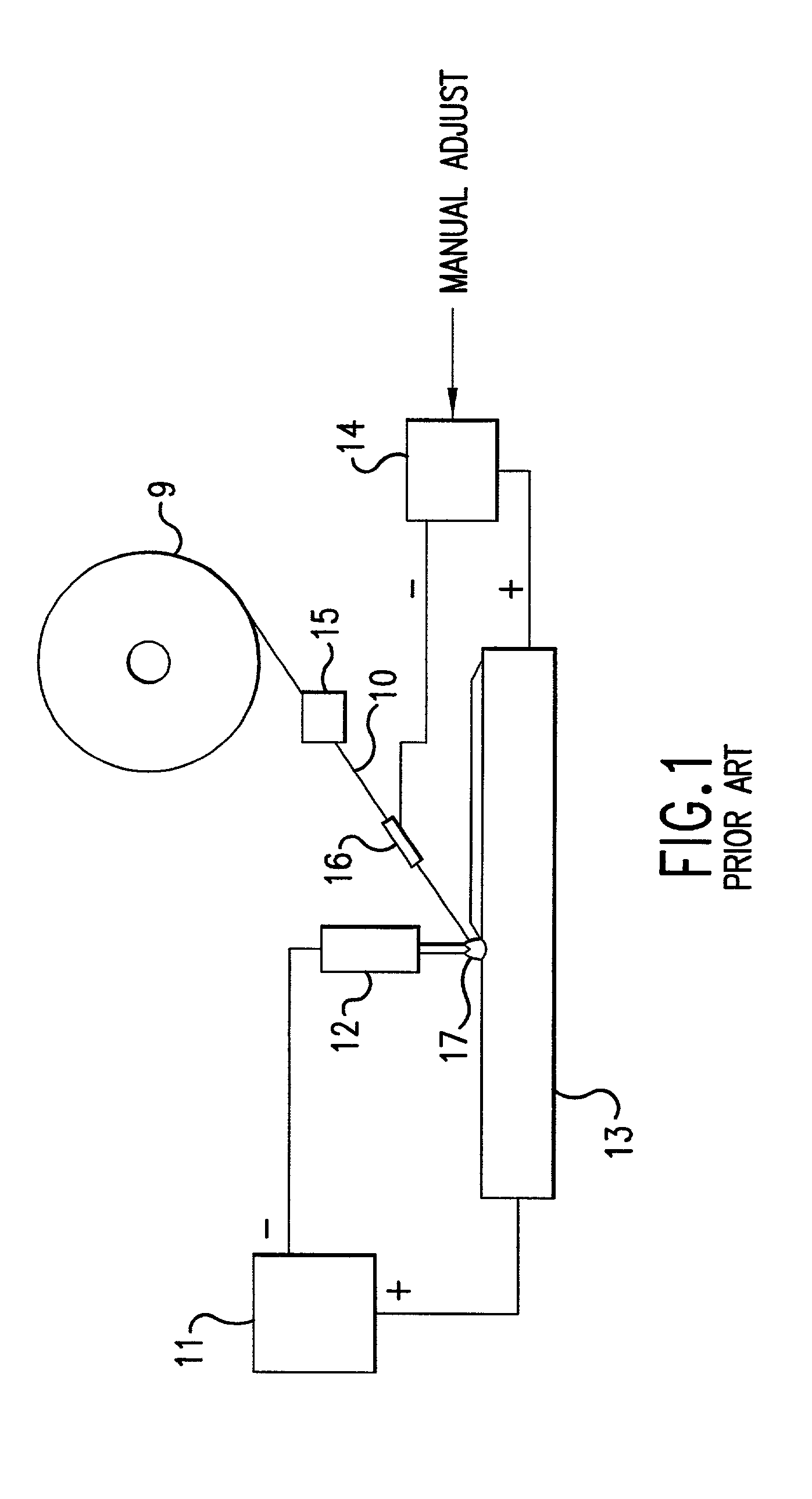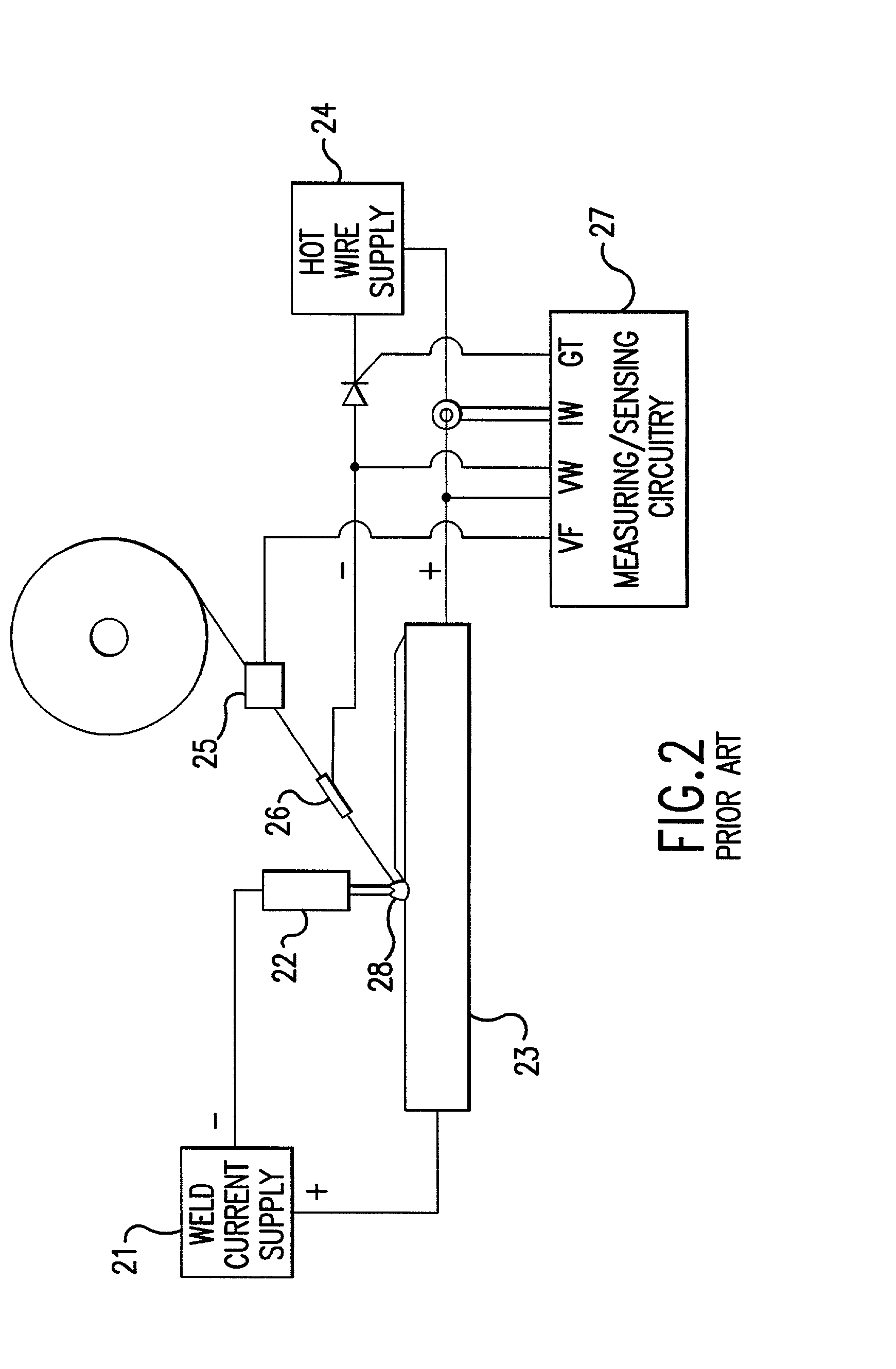Method and system for hot wire welding
a technology of method and system, applied in the field can solve the problems of introducing many errors, burning back, and affecting the quality of hot wire welding, and the prior art system does not provide coordinated control of components with respect to other components
- Summary
- Abstract
- Description
- Claims
- Application Information
AI Technical Summary
Problems solved by technology
Method used
Image
Examples
Embodiment Construction
[0029] FIG. 3 is a block diagram of an embodiment of the present invention which provides simplified and easily overridden hot wire control. With reference to FIG. 3, digital computer means embodied as a microprocessor controller 31 is provided for controlling all aspects of the welding process. The microprocessor controller 31 comprises a central processing Unit (CPU) 48 for processing or running at least the logic routines provided in FIGS. 5 to 9, and a memory unit 50 for storing information including the data of FIG. 10 as a data-base. The CPU unit can include an Intel 8032 chip.
[0030] A wire feed servo 32 is directed by the microprocessor controller 31 to maintain a desired filler wire speed. A wire feed motor 33 feeds the filler wire 46 into a welding puddle 47. This system also contains a main welding power supply 34 for supplying a main welding current to a torch 35 which preferably includes a non-melting tungsten electrode. The main welding power supply 34 is preferably a D...
PUM
| Property | Measurement | Unit |
|---|---|---|
| DC output voltage | aaaaa | aaaaa |
| DC output voltage | aaaaa | aaaaa |
| voltage | aaaaa | aaaaa |
Abstract
Description
Claims
Application Information
 Login to View More
Login to View More - R&D
- Intellectual Property
- Life Sciences
- Materials
- Tech Scout
- Unparalleled Data Quality
- Higher Quality Content
- 60% Fewer Hallucinations
Browse by: Latest US Patents, China's latest patents, Technical Efficacy Thesaurus, Application Domain, Technology Topic, Popular Technical Reports.
© 2025 PatSnap. All rights reserved.Legal|Privacy policy|Modern Slavery Act Transparency Statement|Sitemap|About US| Contact US: help@patsnap.com



